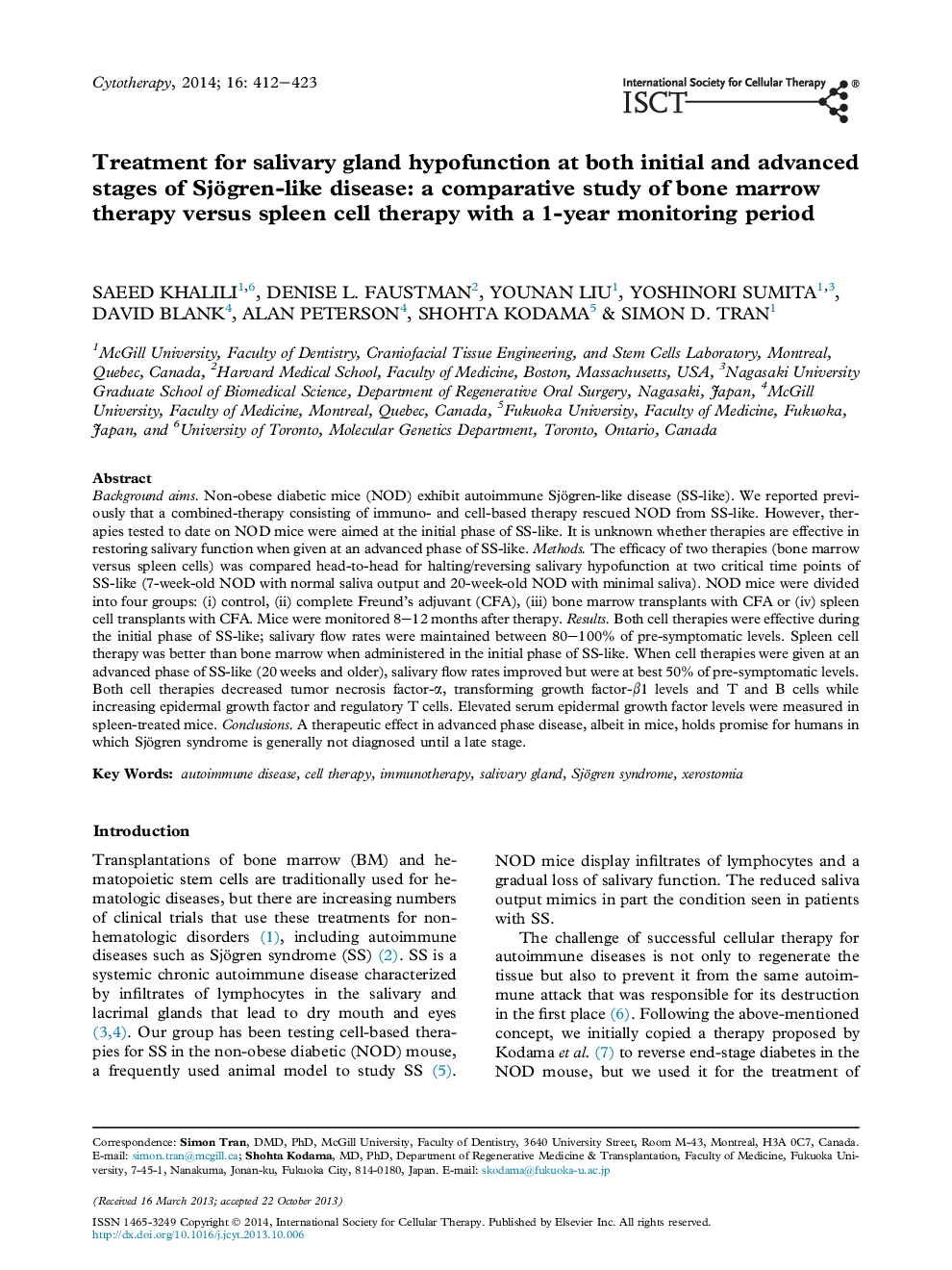| کد مقاله | کد نشریه | سال انتشار | مقاله انگلیسی | نسخه تمام متن |
|---|---|---|---|---|
| 2171761 | 1093500 | 2014 | 12 صفحه PDF | دانلود رایگان |

Background aimsNon-obese diabetic mice (NOD) exhibit autoimmune Sjögren-like disease (SS-like). We reported previously that a combined-therapy consisting of immuno- and cell-based therapy rescued NOD from SS-like. However, therapies tested to date on NOD mice were aimed at the initial phase of SS-like. It is unknown whether therapies are effective in restoring salivary function when given at an advanced phase of SS-like.MethodsThe efficacy of two therapies (bone marrow versus spleen cells) was compared head-to-head for halting/reversing salivary hypofunction at two critical time points of SS-like (7-week-old NOD with normal saliva output and 20-week-old NOD with minimal saliva). NOD mice were divided into four groups: (i) control, (ii) complete Freund's adjuvant (CFA), (iii) bone marrow transplants with CFA or (iv) spleen cell transplants with CFA. Mice were monitored 8–12 months after therapy.ResultsBoth cell therapies were effective during the initial phase of SS-like; salivary flow rates were maintained between 80–100% of pre-symptomatic levels. Spleen cell therapy was better than bone marrow when administered in the initial phase of SS-like. When cell therapies were given at an advanced phase of SS-like (20 weeks and older), salivary flow rates improved but were at best 50% of pre-symptomatic levels. Both cell therapies decreased tumor necrosis factor-α, transforming growth factor-β1 levels and T and B cells while increasing epidermal growth factor and regulatory T cells. Elevated serum epidermal growth factor levels were measured in spleen-treated mice.ConclusionsA therapeutic effect in advanced phase disease, albeit in mice, holds promise for humans in which Sjögren syndrome is generally not diagnosed until a late stage.
Journal: Cytotherapy - Volume 16, Issue 3, March 2014, Pages 412–423